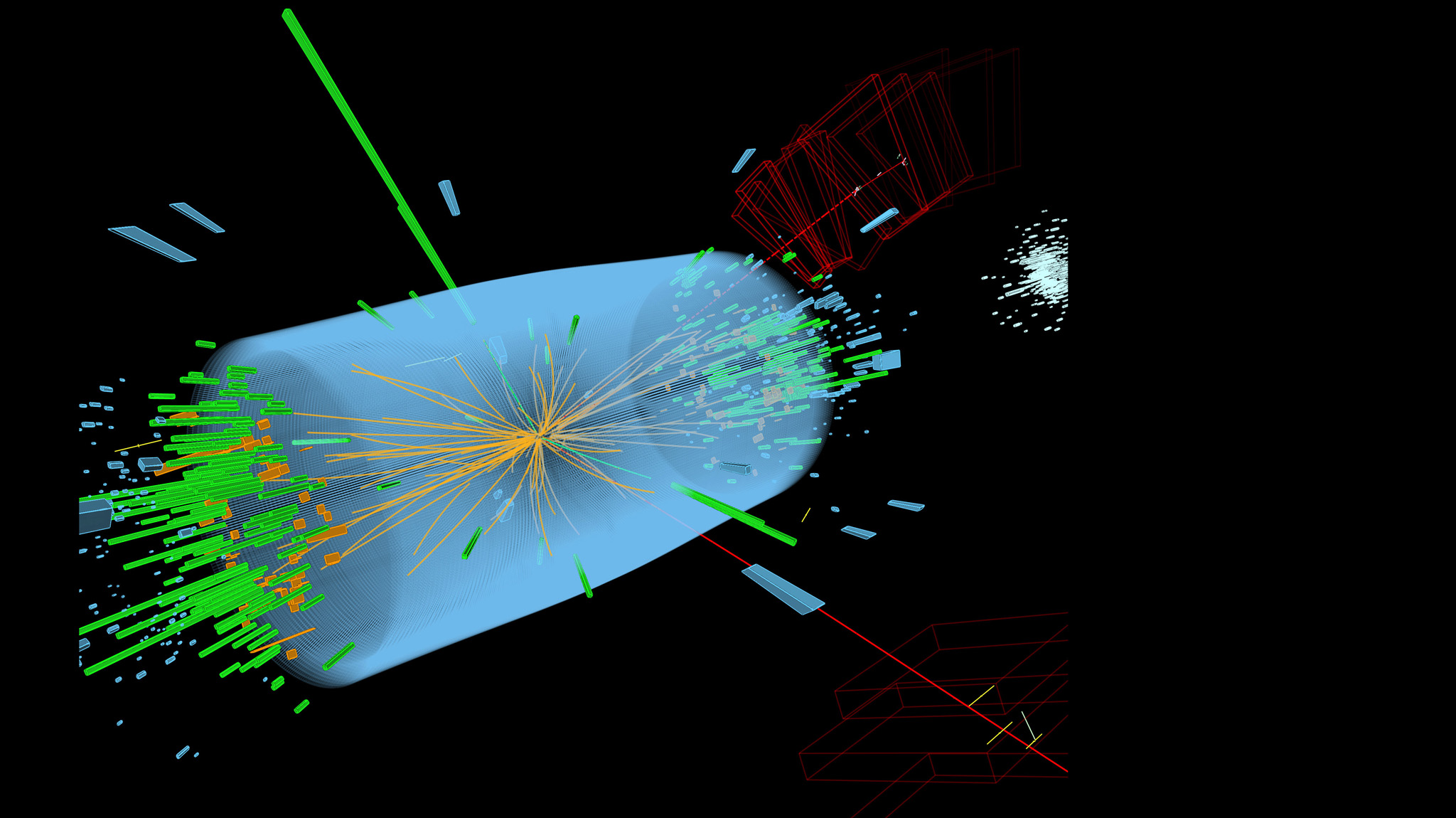OXFORD, Miss. – Scientists continue to delve deeper into understanding the structure of the universe and the particles that form it, based on a recent discovery by an international group of physicists that includes several University of Mississippi researchers.
Faculty and postdoctoral researchers in the UM Department of Physics played major roles in the research and discovery of the Higgs boson, the subatomic particle thought to be responsible for all mass in the universe. The discovery was announced July 4 by scientists at CERN, a multinational research center headquartered in Geneva.
“One thing we have not been able to show until now is where the fundamental particles get their mass, and how they get it,” said Breese Quinn, associate professor of physics. “We have finally found it after looking for about 40 years.”
The Higgs boson is named after Peter Higgs, a physicist who came up with an idea for how particle masses could be generated. Particle physics attempts to describe the physical nature of the universe such as what it is made of and how it works on the most fundamental level.

Event recorded with the CMS detector. The event shows characteristics expected from the decay of the Standard Model Higgs boson to a pair of Z bosons, one of which subsequently decays to a pair of electrons (green lines) and the other Z decays to a pair of muons (red lines). Photo courtesy of CERN.
“A common analogy is that the Higgs field is like a room full of paparazzi,” Quinn said. “If I walk through that room, nobody pays any attention to me since I am not famous, and I cross from one side to the other very quickly with little resistance. But if Eli Manning walks through the room, all the paparazzi cluster around him, severely impeding his progress. He gathers this resistance to him and moves very slowly.
“Particles, like me – or a tiny electron – that do not interact much with the field gain little mass. But particles that interact strongly with the field, like Eli Manning, have a lot of mass – for example, the top quark, the heaviest known fundamental particle, which gets its great mass from its strong interaction with the Higgs.”
The only way to know if the field actually exists is by producing the Higgs boson itself, which is what scientists are very confident they have done, Quinn said.
The university’s contributions to this discovery involve the calibration and computer simulations of hadron calorimeters, devices used to determine the energies of any particles emerging from the proton-proton collision. UM physicists researched and developed these devices and the Silicon Tracker system, used to observe the trajectories, direction and momentum of charged particles.
“Several members of the high energy physics group played key roles in the Higgs boson searches,” said Lucien Cremaldi, professor and chair of physics and astronomy. “Drs. Quinn and Jim Kraus played important roles in the commissioning and analysis of the D0 experiment and its data, narrowing the search window for the new boson. Drs. Rob Kroeger, James Reidy, David Sanders, Don Summers and myself work on the CMS experiment at CERN, which recently found convincing evidence for the new boson at a 125 GeV mass energy. The university made significant contributions to the design and building of parts of large CMS detector at CERN.”
Quinn, Kraus and postdoctoral research associate Jenny Lyn Holzbauer are part of the team at Fermilab in Batavia, Ill., that was the first to find evidence for the Higgs.
According to a recent article in The New York Times, the confirmation of the Higgs boson particle constitutes a rendezvous with destiny for a generation of physicists who have searched for the boson for nearly half a century without actually ever seeing it.
“The discovery of the Higgs implies that we are now at a stage in which the exploration of physics beyond the Standard Model is possible,” said Kroeger, professor of physics and astronomy. “The current experiments are expected to run for decades more in order to study the properties of the Higgs boson and to look for new elementary particles.”
Kraus, a postdoctoral research associate, is excited about the possibilities that the discovery of the Higgs boson will bring.
“This is a very exciting time for our field,” Kraus said. “I look forward to learning more about this particle, to see if all of its properties are consistent with what we expect from the Higgs boson.”
For more information on the UM High Energy Physics Group, go to http://www.olemiss.edu/depts/physics_and_astronomy/research/hep.html.